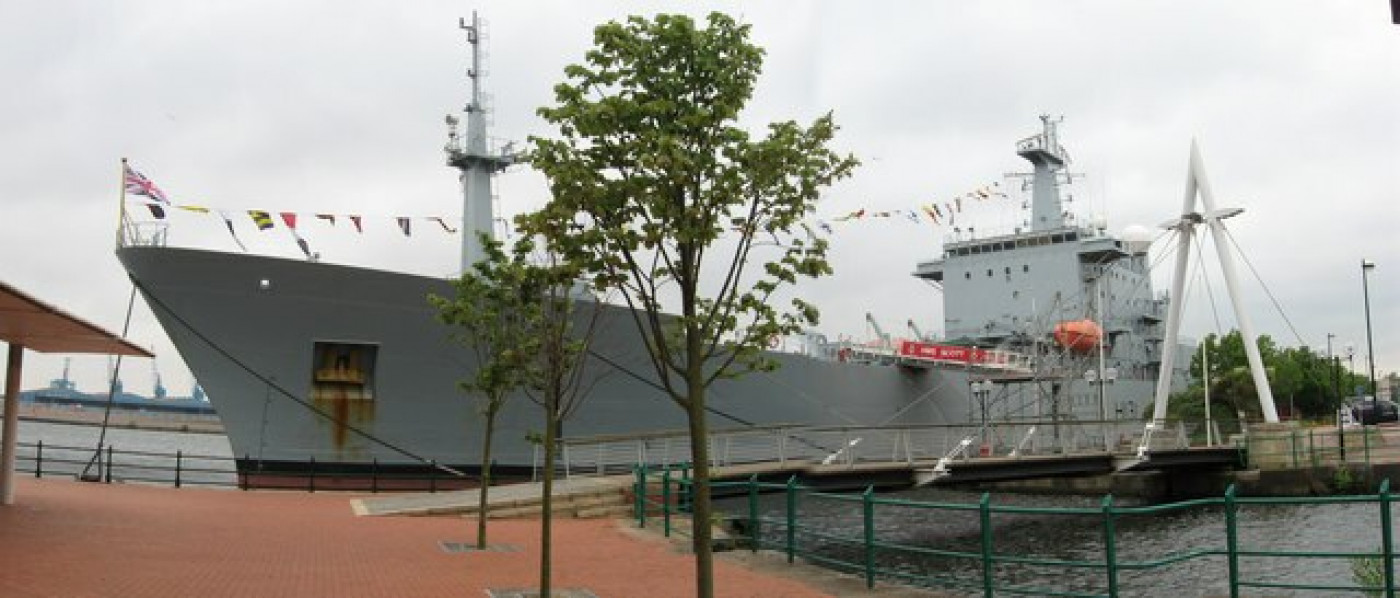Tuesday, December 12 2023
There has been a traditional attitude in the Royal Navy (RN) that it “could and would use its ingenuity to manage any disaster at sea that came its way” to ensure that the ship can continue to “float, move and fight”, comments Vaughan Pomeroy, a former Marine Technical Director of Lloyd’s Register (LR). He recalls that in the early 1980s there was a significant difference between the Royal Navy (RN) and the Merchant Navy (MN) in safety culture and attitude to risk. [1]
The MN has for generations been subject to classification rules and statutory regulation requirements that set out the “minimum standards for design, construction and maintenance, consistent with safe operation”. This extends to hull construction and basic machinery of Royal Fleet Auxiliary (RFA) vessels, not least so that they are permitted to enter commercial ports for loading, although they also have specialist equipment for replenishment at sea and other operational requirements. [2]
The Role of Lloyd's Register in Naval Engineering Standards Development
Explaining Lloyd’s Register’s (LR) work with the UK Ministry of Defence (MoD) and the RN, Pomeroy explains that the development of RN Naval Engineering Standards in the 1970s and 1980s was based on collating experiences and lessons learned. These, while being extremely valuable were in comparison to civil marine engineering standards, difficult to maintain and develop as equipment and experience evolved. [3] Pomeroy recalls that initially the MoD did not recognise the interdependence between RN ship classification and the international statutory regime for compliance with the International Maritime Organization (IMO) regulations. That became apparent with the development of HMS Ocean, the innovative landing platform helicopter vessel designed in the mid 1980s, which entered service in the 1990s. [4]
This was the first major RN warship designed and constructed to be classed by Lloyd’s Register (LR), [5] and was a step change in how warships were designed and procured by the MoD. [6] HMS Ocean was also subject to a Whole Ship Safety Case (WSSC) for the first time in the RN and the case study was much reviewed in marine engineering conferences through the 1990s [7]. HMS Scott, the ocean survey vessel ordered in 1995, was also classed by LR as a unique vessel. Still in service in early 2023, she is one of the largest vessels in the whole RN fleet, with several secondary roles. [8] Pomeroy recollects that she was designed to be able to be operated either by the RN or RFA. [9] James Stride, who served on Scott early in his RN career, characterised her as a “spread bet, for both military or civilian service”. [10]

HMS Scott, Roath Basin, Cardiff, 2010.
Development of Lloyd's Register Naval Ship Rules
The collaboration between LR and the UK MoD ultimately led to the development of the Lloyd’s Register Naval Ship Rules in 1997. These were adopted by the MoD for many reasons, not least the increasing challenge of sustaining design and construction standards with reduced specialist capacity in the UK. [11] Having initially been engaged on special vessels and smaller warships, all RN ships are now classed by LR, including submarines and the two new aircraft carriers, HMS Queen Elizabeth, and HMS Prince of Wales. The Naval Ship Rules are also shared internationally including the navies of Australia, New Zealand and Canada. [12]
The next blog post concludes the series of blog posts reporting the several dimensions of the research into learning exchange between the Royal Navy and Merchant Navy in matters of life safety and survivability of disasters at sea.
- [1] Vaughan Pomeroy, conversation 03 March 2023. Senior ship surveyor then Marine Technical Director of Lloyd's Register 1980-2020, subsequently Visiting Professor at Southampton University.
- [2] Vaughan Pomeroy, conversation as noted above, supplemented by follow-up correspondence.
- [3] Vaughan Pomeroy, conversation as noted above, supplemented by follow-up correspondence.
- [4] Vaughan Pomeroy, conversation as noted above, supplemented by follow-up correspondence.
- [5] Nigel Watson, Lloyd’s Register: 250 Years of Service, ed. Barbara Jones (London: Lloyd’s Register, 2010), 157.
- [6] http://navy-matters.beedall.com/ocean.htm Accessed 21 Mar 2023
- [7] J.F. Smith, ‘Living Dangerously - Why Should We? HMS Ocean Is Designed to Be a Safe Ship’ (London: IMarE Conferences and Symposia, 1998); A Rowe, ‘Endorsement of Safety by Independent Audit of the Whole Ship Safety Case - HMS Ocean a Case Study’ (London: IMarE Conferences and Symposia, 1996); P.F. Dimmer, ‘Fire-Fighting in Warships Lessons from the Falklands Conflict’, Mar. Engs. Review 1986, no. Jan (1986): 6; R Puddock, ‘The MOD Ship Safety Management System’ (London: IMarE Conferences and Symposia, 1997); I Lamb and G Rudgeley, ‘A Risk Based Approach to Safety’ (London: IMarE Conferences and Symposia, 1997).
- [8] https://www.royalnavy.mod.uk/our-organisation/the-fighting-arms/surface-fleet/survey/ocean-survey-ship/hms-scott Accessed 21 Mar 2023
- [9] Vaughan Pomeroy, follow-up correspondence, 7 May 2023.
- [10] Commander James Stride RN ret’d, conversation 06 March 2023. Stride was the joint commander of Fleet Operational Sea Training for the Royal Navy (RN) in 2015 and is now Head of Maritime Governance at Carnival UK, the owner of Cunard and P&O Cruises.
- [11] Watson, Lloyd’s Register: 250 Years of Service, 158.
- [12] Vaughan Pomeroy, conversation as noted above, supplemented by follow-up correspondence.

